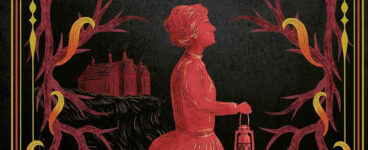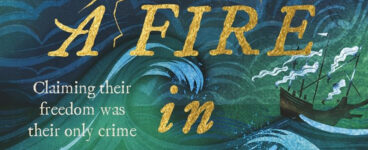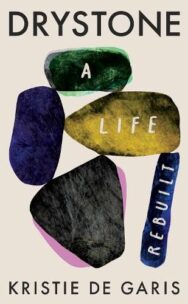‘From an early age, my hands knew the weight of stone.’
Drystone is a memoir of love and chaos, resilience and finding yourself and your space. In this extract we see author Kristie’s first appreciations of the solidity and connection in stone.
Drystone: A Life Rebuilt
By Kristie De Garis
Published by Polygon
Caithness had no cinema, barely any public transport, and no shopping centre – just a Woolworths with a CD section and a pic ’n’ mix that Mum assured us was extortionate. The internet was a faraway fantasy, and Mum wouldn’t let us have a TV, often expressing her concern that shows like Home and Away or Neighbours would rot our brains. But I suspected it was because we couldn’t afford a TV licence. And for a lot of my childhood, I didn’t have firm friends. Even for the nicer kids, it made sense to distance themselves from a person who attracted regular hassle.So I spent a lot of time with my brother, playing outdoors.
The moorlands that surrounded our home required skill to navigate. My brother and I learned this the hard way, often traipsing home wet to the knee, one sock stained bronze by peaty water when we had foolishly taken the solid look of mossy ground at its word. In the summer we discovered tiny life hidden in the grass, the drama of a slow worm sighting, the smell of sphagnum. In winter our playtime was scored by the music of ice in farm-road potholes stretching and creaking beneath our feet. Braving a white-out in pyjamas, our hats, scarves and coats thrown hastily on top. Returning home to the smell of burning peat, our bodies raw with cold.
Our play was dictated by the seasons. In winter, quickly fading light set a strict curfew, but in summer we could take our sweet time. Around solstice the light lingered right above the horizon all the way through to dawn, and with such a gentle transition between day and night, an appropriate home time was much harder to determine. It took just a few bike rides through moorland in light that showed you too much (but not enough) to convince us of the benefits of better timekeeping.
Summer was a whole season of carefree miscalculations. No jumper or jacket for the cycle home, shorts and T-shirt feeling brutally inadequate as the sea air, pulling in the evening mist, covered our arms and legs in waves of goosebumps. In the morning, an eight-mile cycle had seemed easy, so we had given no thought to saving energy over the course of the day for our return trip. One eye on the shifting shadows of the land, we would pedal hard and fast, until we closed the gate between the moor and the track to the farm cottages. From there, we would push our bikes so we could lean on the handlebars for support, arriving at our front door, exhausted and close to tears.
As soon as we were inside, our mum would empty our stuffed pockets. The animal bones were immediately confiscated, the flowers we picked for her were unbent, fluffed and put in a vase, and our collections of stones were piled onto windowsills all over the house. Any parent knows that a walk with kids means hauling five kilos of stones back to base. Children know what we pretend to forget: stones are treasures. Even as adults, we will privately pocket a pretty pebble on a beach, and don’t we all secretly hope to turn one over and discover the imprint of million-year-old life? Within their small, solid forms, stones encapsulate the very essence of memories.
Frank, another of my mum’s boyfriends, looked hastily sketched. No solid edges, each part of him an impression of the real thing. His long, pony-tailed hair and pointed beard reminded me of a Buffalo Bill I had once seen in a performance of Annie Get Your Gun at the Playhouse in Edinburgh. As if in homage, Frank wore a suede jacket and tall leather boots.
He took us on a walk in the field next to his house, asking us if we knew what had made this track or left that dropping. We did not, and we looked on horrified as he picked up a small pellet of shit from the ground and tasted it. Not popping the whole thing in his mouth but just kind of licking it. ‘Aye, that’ll be a deer,’ he said before walking on ahead.
But I loved the floors in his house.
Standing lonely somewhere outside Halkirk, Frank’s house was a tiny, loaf-like structure that sat so low in the moorland it looked like it might be sinking. Huddled within the metre-thick, solid stone walls were a few deep-set windows that were visible only at night, when interior light illuminated their positions in the dark. I don’t remember doors; instead, heavy, faded curtains hung on sagging rails. Wires snaked the walls, secured occasionally with white tape curling and blackened at its edges.
Laid in huge squares, flagstone floors ran throughout the building. Ripples, the influence of water frozen in time, disrupted their surface, making them look like a nighttime riverbed. Ice-cold in winter, the slabs warmed as the ground did, and in summer you could walk on it without socks, feeling every lithic detail beneath your feet. The stone was always warmest around the hearth where peat, cut in blocks from the land, fuelled a fire, the sole source of heat in Frank’s home. A permanent draught from the front door excited ash in the grate and sent dancing particles through the air to settle all over the house.
Frank, although not particularly houseproud, seemed to think the flagstone warranted special treatment. First, he’d sweep, paying particular attention to the indentations between the stones. Then, fetching a bottle of milk from the fridge, he’d fill a small bowl with the cold liquid and carefully set it down beside him. Soaking the corner of an old red rag, he’d gently wave this cloth across the floor – and the flags, at first dusty and dull, would reappear from beneath the cloth, an oil slick of dark, shining stone.
Like Caithness itself, Caithness flagstone is very flat and very tough. An obstinate, sedimentary rock that splits along its bedding plane to create sheets, it reflects colour the way the sea does. Reacting to the moods of the sky with intense clarity, or murkiness, over the course of a few hours it will shift from uncorrupted black to leaden grey to warm-toned, to blue.
I saw natural deposits of flagstone in coastal areas or in long-abandoned inland quarries. On the moorland itself, I would find it in the form of an existing structure – or a structure that once existed. Scattered across Caithness is thousands of years’ worth of drystone: brochs, cairns, blackhouses, stells, fanks and, the very bones of the land, endless miles of drystone walls.
Drystone is a traditional craft. Building with stone without mortar, you can create something as simple as a wall or as tricky as a chapel. Drystone is about using what you have to do what you need. What Caithness has is flagstone.
Rising like a spine from the ground, drystone is often the only visible feature in the recumbent Caithnessian landscapes. A constant roadside companion, tightly packed stone walls line ditches amid the white froth of meadowsweet and the always surprising burgundy and apricot of water avens. Running the length of fields, flagstone fences – those single, square sheets of flagstone placed edge to edge – stand like domino-ed gravestones. A memorial to the land and all that has been lost to time.
From an early age, my hands knew the weight of stone. Firmly pulling a weathered grey sheet from a line of copes was like unsheathing a heavy blade. Misjudging the integrity of a wall, it would shed into a slithering clatter. On a sunny day the smell was of dry moss-musk, but when I lifted a well-settled stone to reveal a damp nook, it would be stirring with quiet life and metallic earthiness.
One afternoon at school, we stood in line to peer at a slide containing the inner epidermis of an onion bulb that had been slotted into a microscope and placed at the front of the class. I waited, bored, to take a look at what would most certainly be a bunch of boring onion shapes. When my turn finally came, I pressed my eye against the warmed black rubber of the eyepiece and saw, unmistakably, the interlocking shapes of a drystone wall.
I began to pull stones from the ground like root vegetables, brushing off the dirt and stacking them in an attempt to replicate that neat cellular structure. As I built these simple altars, I’d collect fronds and flowers from the banks of the burn and place them on the stones. A wee pagan, arranging pink mops of ragged robin among green fern fingers, I hoped the universe would be pleased with my small offerings.
Drystone: A Life Rebuilt by Kristie De Garis is published by Polygon, priced £14.99.
ALSO IN THIS ISSUE

 The Needfire by M. K. Hardy
The Needfire by M. K. Hardy
‘No one had challenged the banns because she knew no one here, was nothing here. She was completely …

 A Fire in their Hearts by Philip Paris
A Fire in their Hearts by Philip Paris
‘Parting from our families had been a great deal more upsetting than Hamish and I had imagined.’













